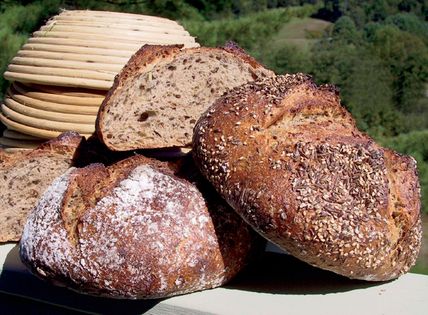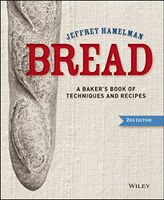Advertisement

Preparation info
- Dough Yield: About
27
loaves at 1.5 lb each - Difficulty
Medium
Appears in
Published 2004
Here is Another Bread that Uses Soaked Old Bread in the new batch, and it is a bread that was developed in an interesting way. Several years ago at the King Arthur Flour Bakery we began making a 100 percent rye pumpernickel (see Vollkornbrot,), and we had quite a following for the bread right away. Because of its great keeping quality, we felt that selling it for five days was acceptable. After a few months, however, we began having some bread left over af


